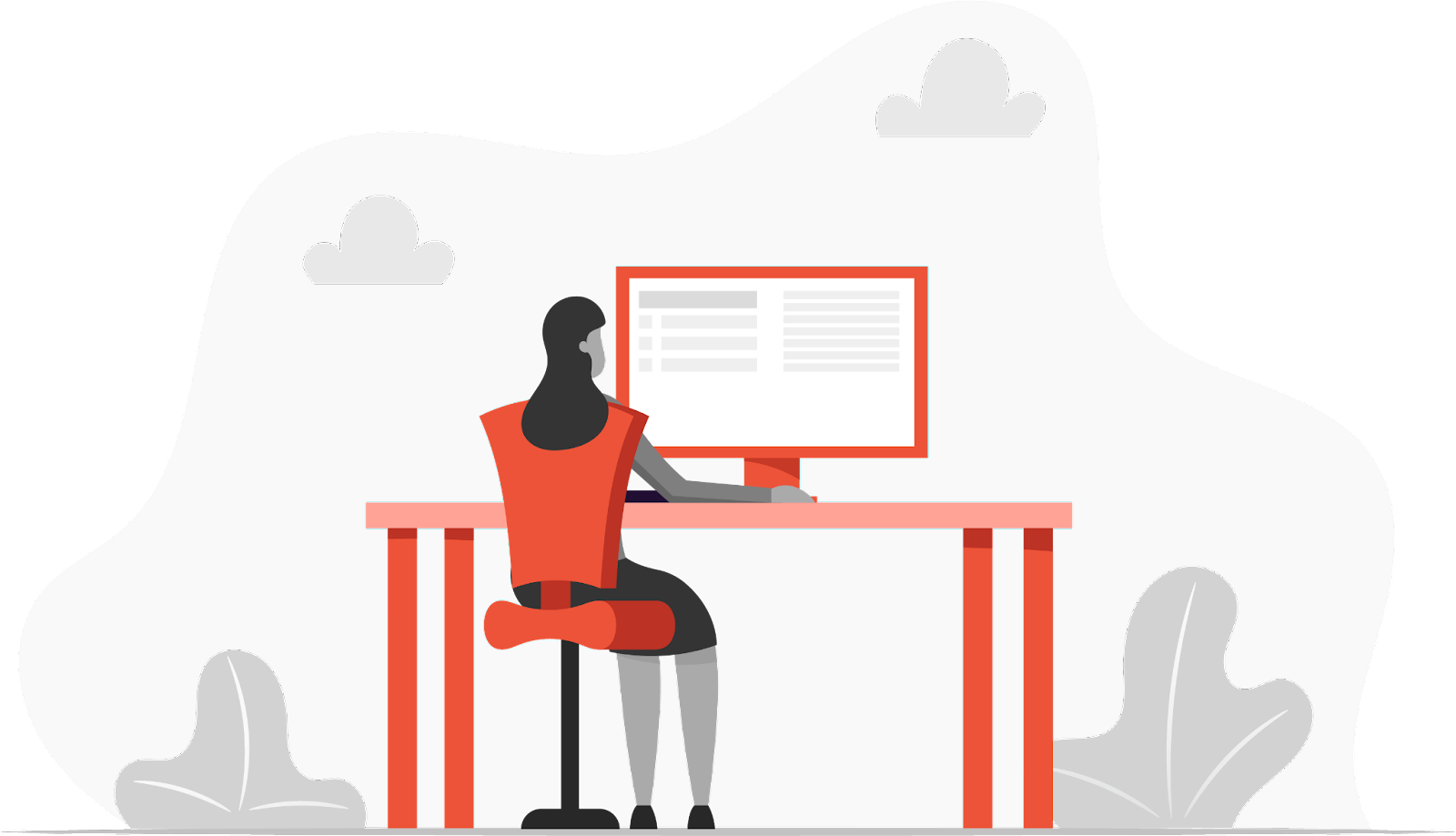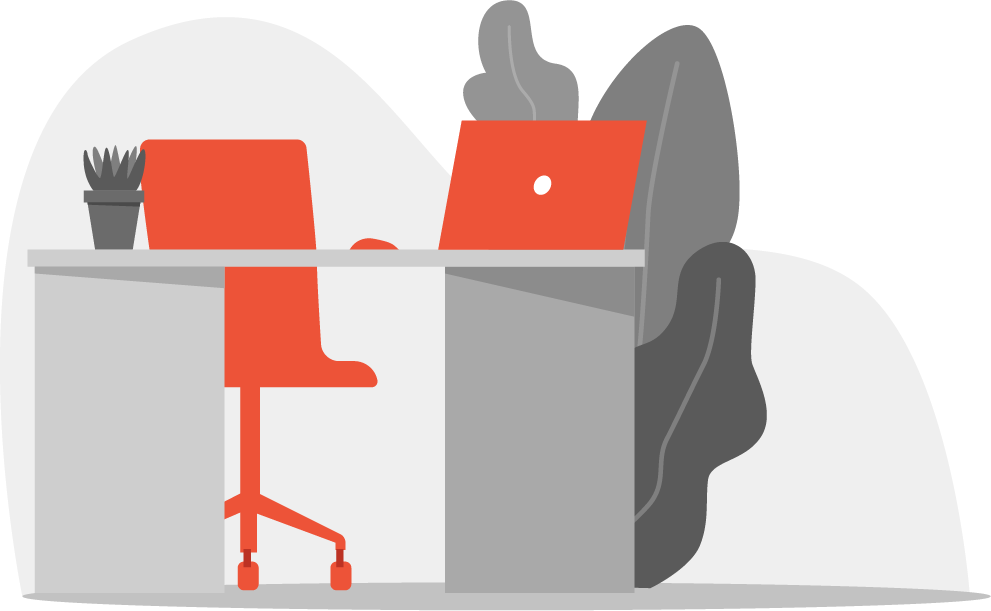The Secret Power of the Personal Office
Are workers more productive in a personal office? If they are, how should that office be laid out? Really, what makes a good working environment anyway? All of these questions have answers, sure, but each one leads to yet another cycle of questions.

If you work from home, you’ve no doubt had to face this idea head-on. Because there, you have a lot more freedom over where you get your work done – and that means, you’ll have to optimize it. You look left – should that window be there? Do I keep it open or closed? You look right – there’s a lot of non-work things on your desk. Is it really worth the time investment to clean it all? Or maybe, you should just switch spaces altogether. There’s a lot of questions that need answering – whether you’re an employee working from home, or an employer trying to optimize a space’s layout. And in finding those answers, we will need a map. Something to guide and frame our thinking, so that we can best recognize any answers that come our way.
Now, the idea of a “personal office space” can be read in a couple different ways. First of all, there’s a more easily recognized idea of an individualistic space. Something like a personal room or a cubicle – something that is reserved only for one person and their work, and in some cases, can be customized to the occupant’s liking. The advantages of the space like this are fairly obvious: on top of the ideas of personal agency and independence inherent to the concept, a personal space will inevitably remove any distractions found in a busier space.
The other way of looking at it, though, is the idea of a separated space. And this may require some elaboration. A separated space is a space that is in every sense (geographically, materially, everything), a distinct area that serves no other purpose but productivity. This idea may be obvious or not depending on your history, but in either case the true depth of this idea can be lost on many.

Spaces are not just simple boxes, and the act of building a space does not stop when the construction workers leave the site. Human psychology is a funny thing – we have the power to keep that constructive process going long past the finish date, by marking sites as “special.” And within this process, we can find an unexpected tool towards making a productive space. Something that personal office spaces are uniquely positioned to take advantage of.
This may seem unintuitive to some, but to any religiously-inclined readers out there, you may have already experienced something like this. You already know that a space can be marked as “sacred”, rendering it distinct from anything secular or profane. In a place like that, it’s as though the very air has changed. Stepping inside a worship site changes not just the superficial layer of the space, but impacts what people will and won’t do there. It affects how they view the space on a core, fundamental level – something much more powerful than a sign that says to do/not do something. Signs can, and often are, disobeyed. But here, to disobey the soul of this room becomes an act of sacrilege. It applies a cultural weight that operates within the self, and is far more persuasive than a sign could ever hope to be.
And to anyone looking to pin the blame on theology for this process, dive into any non-theological religion – you’ll find this practice to be universal. It’s not just a “because my God said so” thing, it’s because all people and cultures are capable of this, religious or otherwise. It’s not theological, it’s human – which means it’s something we can use to empower ourselves, should the need arise. And given this article’s topic, that need has indeed arrived.
Bringing things back to a more concrete example, talk to those who often work from home. Do they have a home office already? If they don’t, would they like to have one? Do they leave their house entirely to work at, say, a public library or internet cafe? You’ll likely find a “yes” there, if not multiple.
What would make someone dedicate a whole room of their house just to work, if they’re just as physically capable of that work from a bedroom or kitchen? Why would they walk (or drive) all the way to a library, if one of the main benefits of work-from-home is the lack of a commute?
The answer is easy. Because rooms that are dedicated to a specific goal are powerful, and these powers don’t like to overlap each other. Try getting work done from the comfort of your bed – sure, you’ll get some work done, but you’ll inevitably find yourself drifting towards the things you typically do in that room. You’re in a bedroom, and your brain is going to try and make you do bedroom-esque things – relaxing, leisurely, restful things.
What you need to maximize productivity is a productive space, plain and simple. Not just something that has all the materials to get work done – someplace, somewhere, whose primary existence is facilitating the action, the habit, of work. You’d be in a work space, so just as in your bedroom, your brain will try to get you to do work-esque things. Like working.

Because to the brain, spaces are special. They’re not done being built until they’re filled with people, and with actions. The room and its materials can define the nouns and verbs of a space, but it is the people who add the adjectives and inflections that skew how a space is perceived. Sure, a space can provide the location and the tools to get work done, but if all its occupants ever do is slack off, then the space is not respected. It becomes a space where slacking off is the norm. But if the space is marked as special, distinct, and sacred, then its goals become the occupant’s goals. Productivity wins.
A common workplace practice serves to reinforce this idea. Workplace humor is not just a temporary distraction from work, it has a transformative effect that alter’s the worker’s perception of the space. It blurs the line between a dry, boring, but productive space into something more intimate and personal (Kim & Woo, 2021), but still fundamentally productive.
Humor can serve a purpose of increasing productivity through the removal of stress. High-pressure, confusing, and isolating environments are all known to cause stress in workers, which in turn can nosedive an employee’s productivity (Petreanu et al, 2013). By fostering a space that actively combats stress in a way that does not contradict productivity, you will end up with a far more efficient workforce. All it takes is a shift in attitude prompted by a special kind of space.
We can contrast this against the increasingly popular work-from-home strategy that many companies (and workers) find appealing. Many will claim that work-from-home actually leads to greater productivity – which is actually true, but not in all cases. For low-skilled labor like call centers, many studies point to increased productivity. But for higher-skilled knowledge work like IT services, the amount of work completed remained the same, despite an increase in hours worked (Galloway, 2022).
There really is no one-size-fits-all solution to workplace efficiency – it will change between industry, the types of workers you want to hire, local culture, the physical layout of the space, everything. If you aim for perfection, you’ll need to find a model that works for you, or find someone with plenty of options to pick from. But in all cases, a space that facilitates work is mandatory. It must be a place where the act of working is a sacred action, fundamentally linked to the room’s soul. Something built-in and irrevocable. It can’t just be any old space.
Switching gears a bit, there’s one question that still needs to be answered. We can discuss how to optimize a personal office space all we like, but how do we know that this route is even worthwhile – from a worker and an employer’s perspective?
One study’s findings may be of note here: in general, workers in crowded workplaces feel much less appreciated by their employers. The study examined attitudes and behaviors in sparse vs crowded areas – those who worked in the crowded option were far more likely to scan wanted ads during work hours, and those hours were perceived to be longer by those experiencing them. Workers were even more likely to offer a helping hand to a coworker in the sparse setting (Terence, 2001).
And how about that all-important productivity? Sparse workplaces win here too, on that per-worker basis. Not only were the studied workers able to get work done quicker, they were less likely to need to go back and re-complete existing work, following a distraction by a coworker or another’s personal item (Terence, 2001).
What relevance does this have? Sparse-ness and crowded-ness are two metrics inherently tied to this idea of a personal space, which another study reinforces. This next study, aiming to discover key factors in determining how “personal” a “personal space” feels, found that those factors consistently increased a room’s “personal space satisfaction score”. Other factors included having a separated office (instead of an open-plan layout), and having a view outside the office itself (Jicol et al, 2019).
So, if we aim to create an optimal kind of working space, not only does it need to be marked as a working-esque space through that funny quirk of human psychology, the “personal” factor should also be optimized – and to achieve that, we remove clutter and replace it with a feeling of distinct separation.
That separation does not have to be all-encompassing, though, as the presence of others can lead to reductions in stress, and therefore increased productivity.
The workers themselves benefit here too – not just in terms of productivity. Even if they are enjoying themselves and have a productive day, what incentives do they have to actually stick around, financially?
There are many factors, but the main ones are twofold. Workers that actually go to an office setting, to any extent (they can still have a majority work-from-home experience and still get this), can more easily establish personal connections and build career networks with associates. Additionally, workers who are physically seen by their bosses are more likely to get promoted (Galloway, 2022). Physical presence builds relationships and connections, both of which can be leveraged into career success.

So, what have we learned? How valuable is that whole “personal office” thing, really? Turns out that answer is “pretty valuable” if you know what to look for. If you’re more interested in a single-occupant situation – be it in working from home, or if your business model just suits it better – it’s worth doing anything possible to mark that space as a distinct, personal, and productive space. When getting other people involved, there can be great benefits to all parties involved – both the worker and the employer – so long as things don’t get too crowded. Maintain that “personal” feeling in all situations, and according to the data, productivity will surely follow.
Book a meeting room in Toronto
If your business works best with a separated work/home space, but doesn’t need it to be a permanent fixture, The Professional Centre has plenty of options to fill your exact niche.
Pick up all the benefits of a centralized workplace, without any of the firm anchors keeping your business model rooted in a single method. Whether you need to service a large team or a small meeting, The Professional Centre can supply the exact kind of space you need to enhance your team’s productivity.
Works Cited:
Petreanu, V., Iordache, R., & Seracin, M. (2013). Assessment of work stress influence on work productivity in Romanian companies. Procedia – Social and Behavioral Sciences, 92, 420–425. https://doi.org/10.1016/j.sbspro.2013.08.695
Jicol, C., Taulo, G., GOLDIE, C., Esenkaya, T., Hynes, R., Paradise, C., … de Sousa, A. A. (2019, November 2). Exploring the Effects of Environmental Cues on Perceived Personal Space in the Virtual Workplace. https://doi.org/10.31234/osf.io/9jqby
Kim, H., & Woo, SH (2021). Fun Space or workplace? The Role of Humor in Navigating Work-personal Space in South Korean Organizations. The Journal of the Korea Contents Association , 21 (9), 666–683. https://doi.org/10.5392/JKCA.2021.21.09.666
Terence M. Murphy (2001) The Effects of a Crowded Workplace on Morale and Productivity, Journal of Histotechnology, 24:1, 9-15, DOI: 10.1179/his.2001.24.1.9




